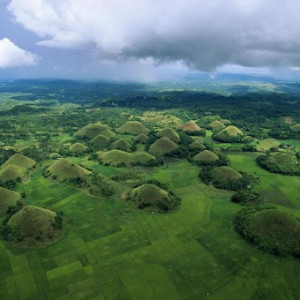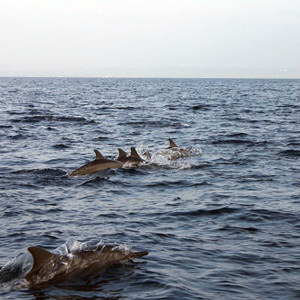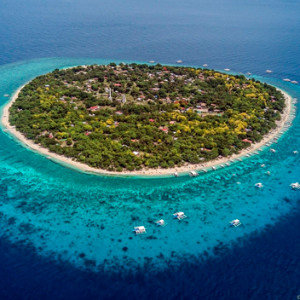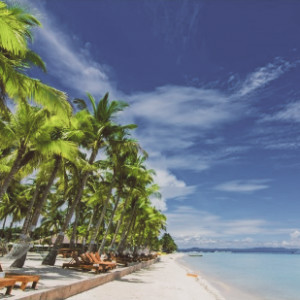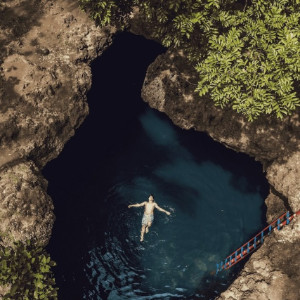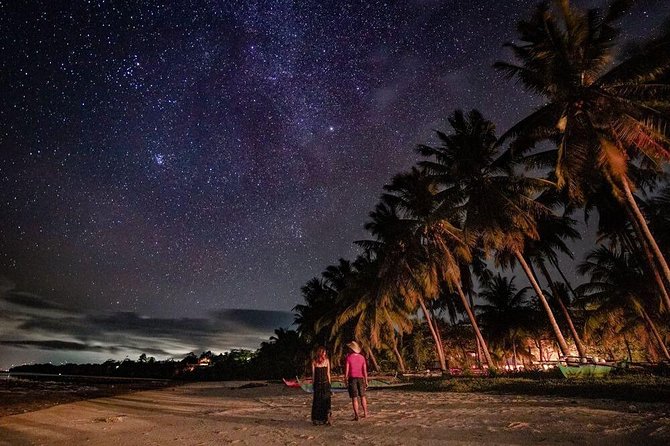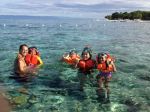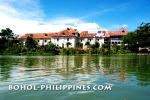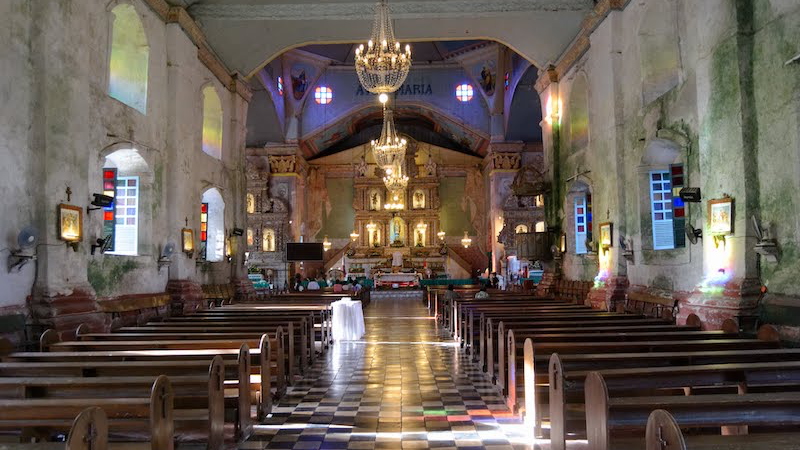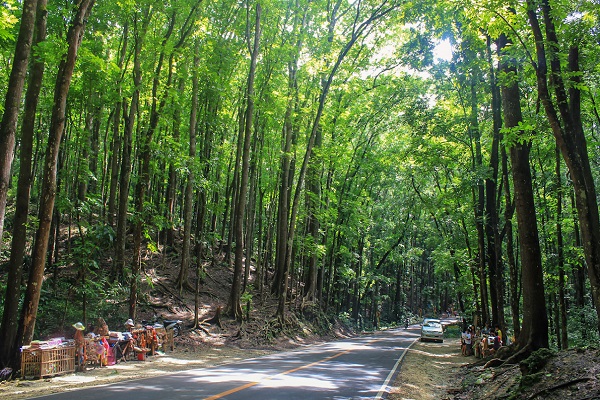Olango Island Group Dive Sites
Secure your Cebu Bohol ferry tickets today to start your unforgettable journey!
The Olango Island Group comprises of Olango Island and islets: Sulpa, Gilutongan, Nalusuan, Caohagan, Pangan-an and Camungi. The Olango Island and its neighboring islets are blessed with palm-fringed beaches, rugged cliffs, crystal clear waters, coral reefs and intertidal mudflats that have become the habitat of a large variety of marine and avian species.
Recommended Bohol Philippines Tours
[ Bohol Sight Seeing Day Trips - Check Out Availability ]
[ Full Day Cruise and Sailing Tours - Check out Availability ]
[ Full Day Adventure Tours - Check out Availability ]
Discover more of Bohol's natural wonders through our recommended tours. Click on the links below to embark on unforgettable adventures:
Ready to explore the beautiful islands of Cebu and Bohol? Secure your ferry tickets today through 12go and start your unforgettable journey!
The island lies between 10°16′N latitude and 124°03′E longitude, five kilometers east of Mactan Island; between the Bohol Strait to the South and the Camotes Sea to the North. To the East is the Olango Channel and to the West is the Gilutongan Channel. It is found in the Central Visayan Region of the Philippines.
It is very accessible, only about 15 to 30 minutes away from the Mactan-Cebu International Airport and Cebu City; and the eastern coastline of Mactan Island and nearby Olango Island offer very accessible and diverse diving conditions.
The islands are surrounded by a reef flat-lagoon having a total of 4,482 hectares of extensive sandy beach, rocky shoreline, sea grass beds, coral reefs, inshore flats, mudflats, mangrove forests and salt marsh grass. The six islets are likewise bounded by continuous fringing reefs with steep reef wall on the west and sloping reef at the east coast of Olango. It is considered as one of the most extensive reef areas in Central Visayas and offers scuba diving enthusiasts with a variety of wondrous dive sites.
Most dive sites offer exciting "drop-offs" that descend from about 10 meters depth to about 30 - 40 meters depth in one near-vertical wall. Dive conditions can range from beginner to highly advanced depending upon the currents. Dive operations are best between March-June and September-December.
Scuba Diving is one of the most popular water sport activity in the Philippines. Many foreign nationals and fast learning locals are lured to the dive sites because of a great diversity of more than 800 species of colourful corals, countless fishes of different sizes and color, various-sized and textured shells and much more.
Click for FREE information and compare prices of Bohol Island hotels and beach resorts
Scuba diving at Olango Island is possible all year round. The water temperature in the Visayas varies from 26 to 30 degrees Celsius and is an ideal temperature for scuba diving. Because of this, a 3 to 5 millimetre neoprene wet suit is normally sufficient. Visibility of the dives at Olango Island ranges from 20 to 40 meters.
The island has one of the deepest wall dives in the Visayas and improved management of coral reefs in nearby marine sanctuaries help to provide an abundant coral and fish life much to the enjoyment of divers. A few dive sites are found at the northern tip of the island; two at the southern tip; and others lies across the Gilutongan Channel and much nearer to Mactan Island.
Beautiful coral gardens and a dense fish population are at the western edge of the reef facing Gilutongan Channel opposite Mactan Island. The eastern side has better coral corners and more game fish. This dive site is recommended for experienced divers only because of strong currents.
Source:
http://www.polaris-dive.com/eng_nf/diving_olango.htm
http://en.wikipedia.org/wiki/Olango_Island
Dive Sites
Baring Dive Site is located between the northern tip of Olongo Island and the village of Baring. It is only 15-20 min by native outrigger boat from Mactan Island. There is little of note in the shallows so descend immediately to 30 meters and either fast drift at this depth or settle down in some shelter and watch the fishes pass by.
There are several spectacular drop-offs, and there are large caves about 30 to 35m down. The wall starts at 60ft/20m and ends down to about 220ft/73m before disappearing on a gradual slope. The area is not suitable for novice divers due to strong surge and fierce unpredictable currents. Visibility is up to 30 meters.
One will encounter white-tip and grey reef sharks, tuna, barracuda, snappers and jacks. For the last 10 years, hammerhead and thresher sharks have been sighted in the area.
Mabini Point is on the northern tip of the island and diving to the depths will give you the best chance of seeing large pelagics. Mabini Point is otherwise known as Tingo Shark Point and faces Mactan Island. It is only 15-20 min by native outrigger boat from Mactan Island.
There is nothing of note at the shallower areas. 35 meters (115 ft) at the drop off, one will surely encounter hammerhead sharks and other varieties, with occasional sightings of the large yet friendly whale shark.
Average depth of the dive is at 115 ft with maximum depth at 130 ft. Diving is recommended for experienced divers only due to strong surges and fierce unpredictable currents. Visibility is up to 30 meters.
Make an open water dive to the top of a deep reef where you will find a sandy bottom sloping even to greater depth. You will encounter thresher and hammerhead sharks and a variety of small fishes.
Talima Sanctuary is south of the Tingo Shark Point. The site is rich with marine fauna and flora. In the shallower areas are a good variety of reef fishes; under overhangs are soldier fish, painted Anglerfish and squirrel fish. One may also encounter lots of lionfish, scorpion fish, and schools of jacks, snappers, batfish, lizard fish, sweetlips, Moorish idols, catfish and fusiliers.
Santa Rosa lies next to the Talima Sanctuary going south. It is located 400m offshore from the village of Sta. Rosa and Poo. Trip by native outrigger boat will take from 15-20 min. Average depth is at 100 ft with a maximum depth of 130 ft.
The dive starts with a sandy bottom covered in soft corals around 9m, leading to a drop-off at 15m, descending to 50m. The site is rich in marine life and one will see a good variety of reef fishes at the shallows, while further down, are fusiliers, catfish, jacks, snappers, sweetlips and many more.
Visibility is up to 100 ft over the drop-off, but it is muddy on the shallow reef-flat from the drop-off to the shore. The currents are normally strong yet more predictable. Beginners should be accompanied by a dive master. It is possible to snorkel on the reef-flat at 9m to 12m, but it is muddy well offshore and has strong currents, so you require banca over.
Gilutongan Sanctuary lies further south, near the tip of Olango Island yet facing Mactan Island. The dive site has an interesting fringing reef from 5 to 22 meters and is known for its magnificent corals and a wide variety of fish. Waters is crystal clear and visibility is very good.
Nalusuan Sanctuary can be found at the opposite side of the Gilutongan Sanctuary, 10 km south of Olango and less than 30 min from Kontiki by boat. The sanctuary boast of the best and healthiest coral reefs in the Olango area with a very rich marine life: a variety of fishes ranging from the smallest to the biggest, sponges, coralline and hard/soft corals. Also spotted in the area are turtles and blue-spotted stingrays. This wall dive has an average depth is at 15 m/49.2 ft to a max depth of 30 m/98.4 ft. The current is low, about 1 knot, and so is ideal for beginners. Visibility is good from 10 to 30 m.
Kansantik is located at the center of the Olango Channel, east of Lassuan Islet. Global Positioning System (GPS) is useful here since the island is underwater. It is about 45-50 min by native outrigger boat from Mactan Island; longer if it takes long to locate the island.
A good banca operator is essential to find the site and drop a shotline and anchor onto it. Once in position, the best guides use a heavily weighted shotline. Some divers use individual lines to tie themselves in that are attached to the weight on the shotline’s bottom.
Average depth is 100ft to a maximum of 165ft with a visibility reaching 130ft. This is an open water dive with fierce currents and strong surge if you get the tide tables wrong, and is suitable only for the most experienced divers. It is advisable to go in small groups and to carry only light equipments, not heavy cameras.
An underwater mountain rises from the depths to within 30m of the surface. Descend the shotline and remember when you leave it that, even if you are presently in slack water, the current will soon pick up again. There are good stony corals, soft corals, whip corals, huge sponges, fishes and other pelagic species.
Source:
http://www.polaris-dive.com/eng_nf/diving_olango.htm
http://en.wikipedia.org/wiki/Olango_Island
http://www.travelsmart.net/ph/Diving_Sites/Cebu.htm
Top of Olango Island Dive Sites
Ready to explore the beautiful islands of Cebu and Bohol? Secure your ferry tickets today through 12go and start your unforgettable journey!
recommended hotel booking
Book your stay in Bohol's breathtaking surroundings through Agoda and experience the ultimate relaxation
Top 25 Sights and Attractions in Bohol
- Chocolate Hills
- Tarsier Conservation Sanctuary
- Panglao Island
- Loboc River Cruise
- Hinagdanan Cave
- Balicasag Island
- Alona Beach
- Bilar Man-made Forest
- Blood Compact Shrine
- Baclayon Church
- Bohol Bee Farm
- Anda Beach
- Sipatan Twin Hanging Bridge Loboc
- Danao Adventure Park
- Sagbayan Peak
- Butterfly Conservation Center
- Clarin Ancestral House
- Dimiao Twin Falls
- Mag-Aso Falls
- Anda White Beach
- Lamanok Island
- Rajah Sikatuna Protected Landscape
- Dauis Church
- Can-umantad Falls
- Punta Cruz Watchtower
Top 20 Destinations of Bohol
- Tagbilaran City
- Panglao Town
- Talibon Town
- Anda Town
- Loboc Town
- Dauis Town
- Ubay Town
- Tubigon Town
- Loon Town
- Jagna Town
- Alicia Town
- Carmen Town
- Getafe
- Danao Town
- Bilar
- Alburquerque
- Sierra Bullones
- Sagbayan Town
- Baclayon Town
- Antequera
Ready to explore the beautiful islands of Cebu and Bohol? Secure your ferry tickets today through 12go and start your unforgettable journey!
All Rights Reserved ©2023. Bohol Philippines Travel Guide
Address: Talibon, Bohol, Philippines

